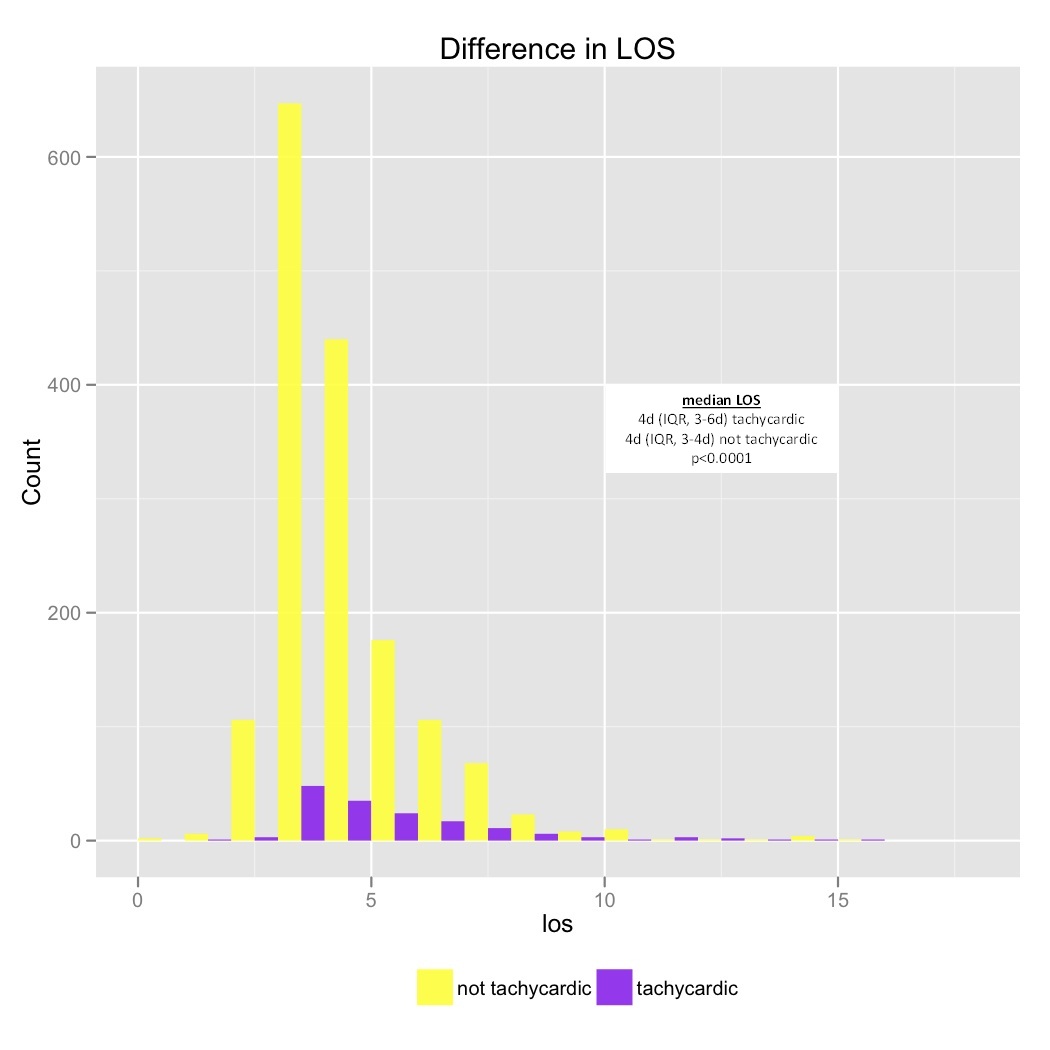Background:
Post-operative tachycardia in patients undergoing hip and knee arthroplasty is a common, but incompletely explored phenomenon. Post-operative tachycardia, noted in up to 33% of our orthopedic surgical population, presents a diagnostic dilemma to the consulting hospitalist. Post-operative tachycardia is often attributed to catecholamine release in response to operative stress or anemia. However, the heart rate (HR) response to acute anemia is variable. Tachycardia is a well-known feature of the clinical presentation of pulmonary embolism (PE) and myocardial infarction (MI) and therefore it is likely that tachycardia may be an important biomarker for these events as well in the post-operative period. Analysis of general surgical patients showed that higher pre-operative HR is associated with post-operative cardiac biomarker elevation and MI but this information is of limited utility for the consultant faced with a post-operative patient with tachycardia, who likely has multiple alternate explanations for tachycardia, e.g., anemia and volume shifts.
Methods:
An electronic chart review of all patients admitted to an orthopedic hospital in 2011 for hip or knee arthroplasty was undertaken identifying all patients with tachycardia, defined as a HR > 119 beats per minute (BPM), within the first four days after the procedure. The groups with and without tachycardia by this definition were compared for endpoints of interest, including:
- Length of stay (LOS); comparison with Wilcoxon rank sum test and T-test
- Adverse Events of Interest:
- MI, defined by billing code
- PE, defined by positive imaging
- Positive troponin, defined as value > upper limit of normal (0.04 ng/dL)
Results:
Patients with elevated HR had longer mean length of stay by 1 day (5.1 days with vs. 4.01 days without tachycardia; p=<0.001). Univariate analysis showed an increased frequency of PE (5.70% in tachycardic patients compared with 1.93% in non-tachycardic patients, p<.001) and myocardial necrosis as evidenced by elevated serum troponin I levels (12.66% in tachycardic patients compared with 5.18% in non-tachycardic patients, p<.001).
|
HR >119 N = 158 (9.0%) |
No HR >119 N= 1603 (91.0%) |
p-value |
|
|
Length of Stay in Days (mean) |
5.01 |
4.01 |
<.001 |
|
PE |
9 (5.7%) |
31 (1.9%) |
.006 |
|
Positive Troponin |
20 (12.7%) |
83 (5.2%) |
<.001 |
|
MI |
4 (2.5%) |
23 (1.4%) |
.465 |
Conclusions:
Based on these preliminary data, tachycardia is a biomarker for PE, positive troponin and increased LOS in the post-operative period after hip and knee arthroplasty. Further analysis is needed to identify the degree of tachycardia which is most closely associated with adverse events such as MI, PE or positive troponin.
